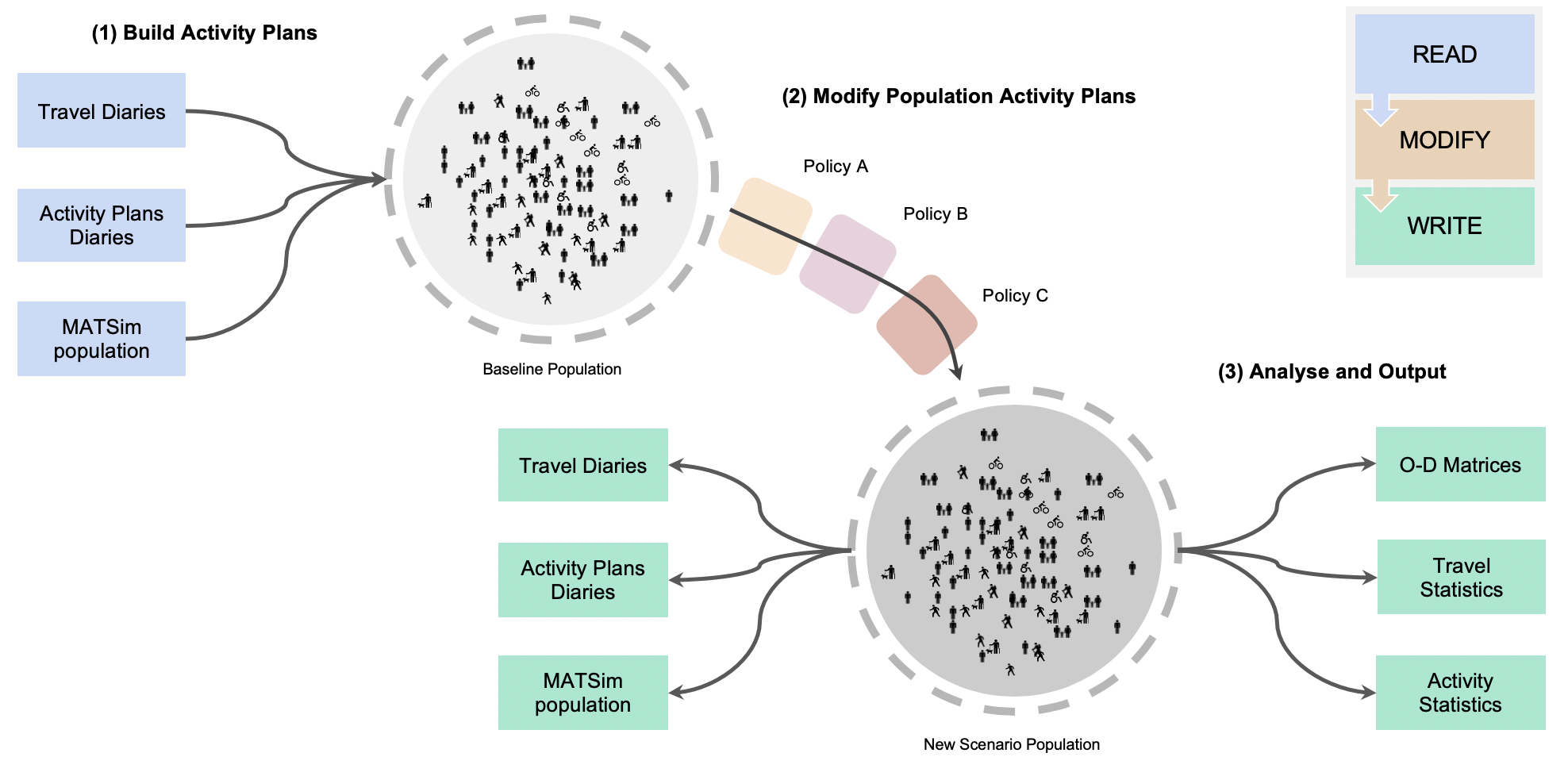
Population Activity Modeller#
PAM is a python library for population activity sequence modelling. Example use cases:
- Read an existing population then write to a new format.
- Modify an existing population, for example to model activity locations.
- Create your own activity-based model.
PAM supports common travel and activity formats, including MATSim.
Activity Sequences?#
Population activity sequences (sometimes called activity plans) are used to model the activities (where and when people are at home, work, education and so on) and associated travel of a population:

Activity sequences are used by transport planners to model travel demand, but can also be used in other domains, such as for virus transmission or energy use modelling.
Brief History#
PAM was originally built and shared to rapidly modify existing activity models to respond to pandemic lock-down scenarios.

This functionality used a read-modify-write pattern. Where modifications are made by applying policies. Example policies might be (a) infected persons quarantine at home, (b) only critical workers travel to work, and (c) everyone shops locally.

Features#
Activity Modelling#
In addition to the original read-modify-write pattern and functionality, PAM has modules for:
- location modelling
- discretionary activity modelling
- mode choice modelling
- facility sampling
- vehicle ownership
More generally the core PAM data structure and modules can be used as a library to support your own use cases, including building your own activity-based model.
MATSim#
PAM fully supports the MATSim population/plans format. This includes vehicles, unselected plans, leg routes and leg attributes. A core use case of PAM is to read-modify-write experienced plans from MATSim. This can allow new MATSim scenarios to be "warm started" from existing scenarios, significantly reducing MATSim compute time.
Why Activity Plans?#

-
They are the ideal mechanism for applying changes, allowing for example, consideration of joint dis-aggregate features across an entire day.
-
They can be post processed for many other output formats such as origin-destination matrices or activity diaries. These outputs can the be used in many different applications such as transport, utility demand, social impact and so on.



